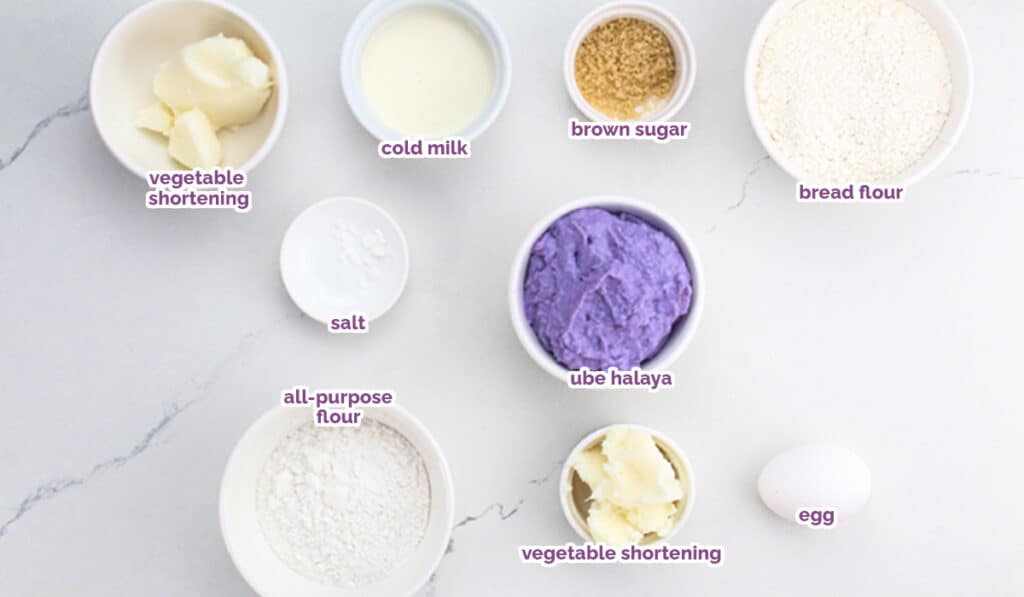Hopia is a beloved Filipino pastry known for its flaky, slightly sweet crust and rich, flavorful filling. Whether enjoyed as a snack or dessert, hopia has won hearts with its delightful taste and versatility. This article will guide you through the recipe of hopia, exploring its origins, ingredients, preparation, and various delicious variations.

Understanding Hopia
Hopia is a type of baked pastry originating from the Philippines. Its name is derived from the Hokkien word “hupia,” which means “good cake.” Traditionally, hopia features a pastry crust encasing a sweet or savory filling, with the most common types being hopia baboy (pork) and hopia mongo (mung bean). The combination of the flaky pastry and rich filling makes hopia a unique treat in Filipino cuisine.
Ingredients for Hopia

Dough Ingredients:
- All-Purpose Flour: Forms the base of the dough, providing structure.
- Baking Powder: Helps the dough rise slightly and become flaky.
- Shortening or Lard: Adds richness and a tender texture to the dough.
- Water: Used to bring the dough together and achieve the right consistency.
Filling Ingredients:
- Traditional Fillings:
- Red Bean Paste: A common choice for a sweet, smooth filling.
- Pork: For a savory option, often seasoned and cooked.
- Variations and Alternatives:
- Sweet Potato: A sweet and earthy alternative.
- Ube (Purple Yam): Adds a vibrant color and unique flavor.
Equipment Needed
To prepare hopia, you will need the following equipment:
- Mixing Bowls: For combining dough and filling ingredients.
- Rolling Pin: To roll out the dough evenly.
- Baking Sheets: For placing the hopia before baking.
- Parchment Paper: Prevents sticking and makes cleanup easier.
- Oven: For baking the hopia to perfection.
Preparation Steps
Making the Dough:
- Combine Dry Ingredients: In a mixing bowl, whisk together the all-purpose flour and baking powder.
- Add Shortening or Lard: Cut the shortening or lard into the flour mixture until it resembles coarse crumbs.
- Incorporate Water: Gradually add water, mixing until a smooth dough forms. Knead lightly and let the dough rest for about 30 minutes.
Preparing the Filling:
- Prepare Traditional Fillings:
- Red Bean Paste: If using store-bought or homemade, ensure it’s smooth and pliable.
- Pork Filling: Cook and season the pork filling until it’s well-flavored and crumbly.
- Adjust Consistency: Ensure the filling is neither too wet nor too dry to avoid leakage.
Assembling the Hopia:

- Roll Out the Dough: On a lightly floured surface, roll out the dough to about 1/8-inch thickness.
- Add the Filling: Place a small amount of filling in the center of each dough circle or square.
- Seal and Shape: Fold or close the dough around the filling, pinching the edges to seal. Shape as desired.
Baking Instructions
- Preheat the Oven: Set your oven to 350°F (175°C) and let it heat fully.
- Prepare Baking Sheets: Line with parchment paper and place the assembled hopia on the sheets, spaced evenly.
- Bake: Bake for 20-25 minutes, or until the hopia is golden brown and the crust is flaky.
- Cool: Allow the hopia to cool on a wire rack before serving.
Variations and Flavors

Hopia Baboy (Pork): This savory version features a filling made with seasoned pork. It’s rich and satisfying, perfect for those who prefer a hearty treat.
Hopia Mongo (Mung Bean Paste): A traditional sweet option, mung bean paste provides a smooth, sweet filling with a hint of earthiness.
Creative Variations: Feel free to experiment with other fillings such as sweet potato or ube to add a unique twist to your hopia.
Serving Suggestions
Hopia is best enjoyed fresh, but it can also be stored for later. Serve it as a snack or dessert alongside tea or coffee. To keep hopia fresh, store it in an airtight container at room temperature for up to a week. For longer storage, you can freeze hopia and reheat it in the oven before serving.
Troubleshooting Common Issues
- Dough Too Sticky or Dry: Adjust the amount of water or flour as needed to achieve a workable dough consistency.
- Filling Leakage: Ensure the filling is not too wet and seal the edges of the dough thoroughly.
- Uneven Baking Results: Rotate the baking sheets halfway through baking to ensure even cooking.
FAQs About Hopia
- Can hopia be made in advance?
Yes, hopia can be prepared ahead of time. Store it in an airtight container to keep it fresh. - How do I store leftover hopia?
Store leftover hopia in an airtight container at room temperature for up to a week. For longer storage, freeze it. - Can I freeze hopia?
Yes, hopia can be frozen. Wrap it tightly in plastic wrap and place it in an airtight container or freezer bag. - What are the best substitutions for common ingredients?
You can substitute shortening with butter for a different flavor, or use a different filling like sweet potato or cheese. - How do I know when hopia is done baking?
Hopia is done when the crust is golden brown and flaky. A toothpick inserted into the center should come out clean.
Conclusion
The recipe of hopia is a delightful journey into Filipino pastry-making, combining a flaky, tender crust with a variety of flavorful fillings. Whether you’re a fan of traditional hopia baboy or prefer sweet mung bean paste, this guide provides all the steps you need to create perfect hopia at home. Enjoy experimenting with different flavors and savoring the results of your culinary efforts.
